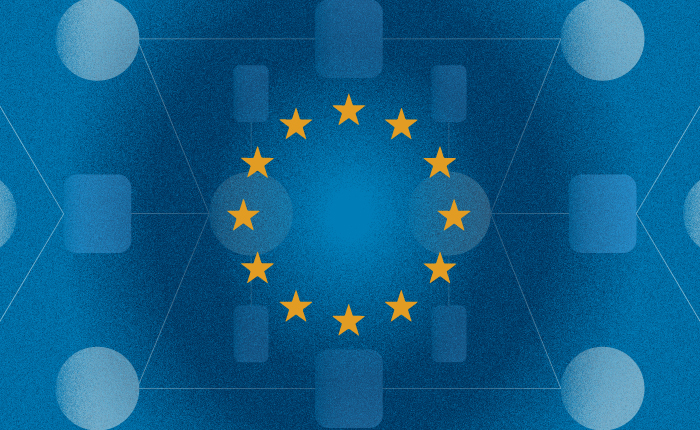As the physical and digital worlds become increasingly enmeshed, consumers are more concerned than ever about their personal data privacy and security. If their sensitive data were to fall into the wrong hands, the potential fallout could be astronomical.
In response to this rising threat, the EU has made concerted efforts to protect consumer data privacy, which they view as a fundamental human right. Specifically, the General Data Protection Rights (GDPR)—the toughest privacy and security law in the world—requires that companies respond to consumer data subject requests (DSR) about how the consumer’s personal information is gathered, processed, shared, and stored.
For companies that wish to comply with these stringent regulations, GDPR data mapping isn’t just a best practice—it’s a matter of necessity.
What is Data Mapping?
A Live Data Map provides a roadmap to uphold data privacy. It’s the process by which companies document their data management: what consumer data they collect, how it will be used, where it will be stored (for how long), and how it moves throughout an organization.
Naturally, companies collect massive troves of data. And that data may come from myriad sources. Often, it will be stored in dissimilar systems and kept in different ways.
Data flow mapping creates a centralized location where all the data is connected. It combines both your data flow and data inventory, which then makes it possible to perform various other data-processing functions like:
- Data migrations
- Data integrations
- Data transformations
- Data warehousing
In essence, data mapping is an essential element to enhance a company’s privacy and adhere to GDPR compliance laws.
DSRs in the GDPR
The GDPR states that data subjects (EU consumers) have the legal right to access their personal data information from the companies that collect said data under privacy compliance. Under these regulations, each individual has the power to make a Data Subjects Access Rights (DSAR) request. According to Recital 63:
“A data subject should have the right of access to personal data which have been collected concerning him or her and to exercise that right easily and at reasonable intervals, to be aware of and verify the lawfulness of the processing.”
In addition to seeing what personal data is collected, how it’s processed, and whether third parties are involved, a data subject may ask that the data controller take additional actions as they relate to their personal information, including:
- Receive digital or physical copies
- Delete data
- Amend or correct the data
- Limit data processing
- Request that the data be transferred to a different controller
To align with GDPR compliance, companies have a month to respond to the request by either satisfying the query or filing a deferral. Ensure your company is complying to GDPR regulations by reviewing Data Mapping best practices. According to CNBC:
“Failure to comply can result in potentially hefty fines — namely, up to 4% of a company’s annual global revenues or 20 million euros ($22.8 million), whichever is the bigger amount.”
Data Flow Mapping in the GDPR
The GDPR requires that companies supply consumers with all of the relevant and sensitive data they have. As mentioned, that could be fractured, hidden in various nooks and crannies across enterprise-wide systems.
Just finding where every bit of relevant user data lives for a single customer can be a Sisyphean feat, especially if you attempt to do so manually. But then multiply that challenge across dozens, hundreds, or even thousands of consumers. Without an organizational system, it becomes too much to feasibly manage.
This is why data mapping matters so much.
To comply with the GDPR you need complete visibility and control over everything. The data mapping process makes that possible. It’s the foundational step toward fulfilling all other legal requirements, including but not limited to:
- Responding to data subject’s access requests
- Carrying out data protection impact assessments
- Maintaining data processing activity records
Automated Data Mapping Tools
Although data mapping could be done manually using spreadsheets, the scope and breadth of it all make this an inefficient and error-prone process at best. The larger your organization and the more complex the data, the more difficult the feat becomes.
To handle the ever-evolving complexity of data processing and accountability, companies are turning to automated data mapping tools to facilitate every aspect of the data mapping process, which includes:
- Defining the data
- Mapping the data
- Transforming the data
- Testing the process
- Deploying the data management process
- Regularly maintaining and updating the data map
DataGrail Live Data Map and Request Manager
Data mapping is an integral aspect of fulfilling GDPR DSR requests. But the quality of your privacy program and your ability to comply with various privacy regulations hinges upon your data mapping capabilities and tools.
That’s why DataGrail built the Live Data Map and the Request Manager. Together, these automated tools optimize all aspects of your GDPR compliance activities. We can help you build a more accurate blueprint of where personal data lives—and do so without needing to rely on human intervention to maintain compliance.
How does the platform work?
You can take it for a spin by requesting a demo today.
Source:
Intersoft Consulting. Right of Access. https://gdpr-info.eu/recitals/no-63/
CNBC. Fines for breaches of EU privacy law spike sevenfold to $1.2 billion, as Big Tech bears the brunt. https://www.cnbc.com/2022/01/18/fines-for-breaches-of-eu-gdpr-privacy-law-spike-sevenfold.html.
